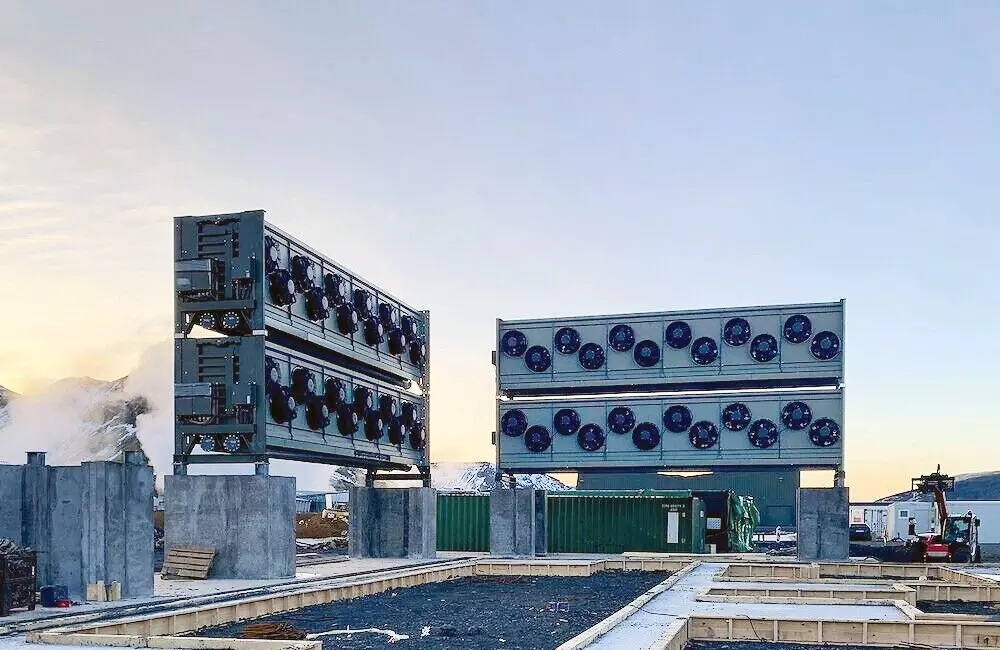An Emerging Front
Moving forward in the battle against climate change, the world is now shifting its focus to Carbon Dioxide Removal (CDR)—beyond mitigation and adaptation—to filter carbon out of the skies

Most of the efforts of countries in combating global warming have been either mitigation measures or adaptation measures. As we have discussed in the earlier articles in the Climate Change series, mitigation measures are those that seek to reduce emissions of greenhouse gases, and adaptation measures are those that seek to respond to the adverse effects of global warming. In the negotiations in various Conferences of the Parties, this mitigation–adaptation binary was the fulcrum around which discussions were held.
We may recall that developed countries had pushed for the primacy of mitigation efforts, which led to the Kyoto Protocol at the third Conference of the Parties in 1997. Developing countries, on the other hand, had taken the stand that emissions cuts were not mandatory for them and that adaptation efforts were equally important. After the Paris Agreement in 2015, mitigation measures took centre stage for everyone, while adaptation efforts were only discussed on the sidelines, without any serious action plan.
In addition to mitigation and adaptation efforts, there is a third strategy that is being discussed in boardrooms and climate conferences: that of carbon dioxide removal (or CDR). CDR is simply the process of taking away the carbon dioxide that is already in the atmosphere. In this article, we will summarise the various CDR interventions we have discussed in the past few articles, namely: Carbon Capture and Sequestration (CCS), Direct Air Capture (DAC), Enhanced Rock Weathering (ERW), Biochar, Mangroves or Blue Carbon, and Direct Ocean Capture.
CDR: A Discussion
While this may sound like an oversimplification, one of the main goals now is to reduce or remove carbon dioxide from the atmosphere, in addition to various mitigation and adaptation efforts. This is because about 37 billion tons of CO₂ are emitted every year, and the number is only expected to keep increasing. The 2024 State of Carbon Dioxide Removal report by the University of Oxford found that around 7–9 billion tonnes of CO₂ per year will need to be removed by 2050 from the atmosphere if the world is to meet the 1.5 degrees Celsius Paris Agreement target. The IPCC Sixth Assessment Report had put this number at 4.7 to 9.8 billion tons.
The various ways to pluck carbon dioxide from the air—or carbon dioxide removal—which have been discussed in great detail in the past few articles are summarised below:
- Carbon Capture and Sequestration (CCS): This is simply the capture of carbon dioxide at the point where it is emitted and its underground storage. Interestingly, oil companies were the earliest users of CCS in the 1950s. It is widely used in the oil industry today. It involves the capture of carbon dioxide emitted from industrial processes, transporting it through pipelines, and storing it in depleted oil and gas wells or saline aquifers. Oil companies like Exxon and Total use this process to put away carbon dioxide.
- Direct Air Capture (DAC): DAC is the process of capturing carbon dioxide directly from the air using chemical or physical processes. Among the three companies involved in setting up DAC plants is Switzerland’s Climeworks, which is setting up a plant in Iceland, where it gets carbon-free geothermal and hydro-electricity at low cost. It uses an amine sorbent to capture CO₂. However, DAC using amine sorbent is very expensive and energy intensive. Even Climeworks charges USD 1,200 per tonne of CO₂ sequestered. The other DAC companies are 1PointFive and Carbon Engineering, which use potassium hydroxide as a sorbent.
- Enhanced Rock Weathering (ERW): This simply speeds up the natural process of weathering of rocks. It involves the spreading of basalt or olivine dust over large agricultural lands, which react with rainwater and carbon dioxide, storing it in the process. ERW appears to be popular, but it’s not new. The theory has been around for a while, but was tucked away in academic journals. Only in 2007 did the Dutch raise the issue by suggesting that large amounts of olivine rock (a green-coloured silicate rock, or forsterite) could be spread on the shores of the North Sea, which would not only capture CO₂ through enhanced weathering of olivine but also impart a greenish, pleasing look to the sand beaches.
- Biochar: Biochar is a carbon-rich material that is produced by the process of pyrolysis, which involves the burning of biomass at high temperatures in the absence of air. Biochar is often added to the soil, which means that the carbon stored stays there for long periods of time.
- Ocean Management: Oceans are large sinks for carbon dioxide, with Direct Ocean Capture being experimented with in some parts of the world.
Conclusion
Carbon Dioxide Removal (CDR) is becoming popular as a necessary and effective way to deal with carbon dioxide emissions. While the high capital costs remain a concern, it appears that CDR will be part of any technological pathway to Net Zero in the future, because mitigation measures may fall very short.
The writer is Additional Chief Secretary, Department of Cooperation, Government of West Bengal



